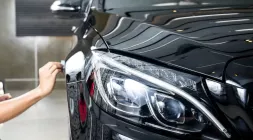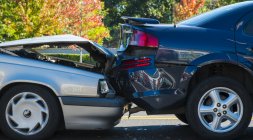Broken Arm Bushing Symptoms You Need to Know About
Your vehicle is made with tons of parts that work altogether. But not many people work on recognizing every single one of this. One of the many parts that most car owners aren’t familiar with is the arm bushing.
Knowing that this will, of course, affect the performance of the entire vehicle. That’s why it’s important to pay attention to signs of broken parts, just like a broken arm bushing. But what exactly is an arm bushing? What does it do for your car? How does it work? What causes it to break or wear out? Read this article from Philcarnews.com on to get all the answers to that and more.
Your vehicle is made with tons of parts that work altogether. But not many people work on recognizing every single one of this. One of the many parts that most car owners aren’t familiar with is the arm bushing. This part is easy to identify.
Every skeletal system comes with cartilage. This aligns and cushions bones at the joints of a vehicle with control arm bushings. This is usually where two joints meet between the lower and upper control arms as well as the vehicle’s frame.
These bushings are made of polyurethane or rubber cylinder. This is then bonded to a much bigger and smaller metal cylinder. This can be found in the inside and outside areas respectively. The control arms are metal pieces that connect the frame of the vehicle to its steering knuckle. This is where the tires and wheels are attached. These are vital to both the suspension and the steering of the vehicle.
Cars with Control Arm Bushings
A lot of the front-wheel-drive vehicles of today come with lower control arms. However, there are vehicles as well as large SUVs and trucks that come with lower and upper control arms. These come in a kind of double-wishbone suspension design.
The tip of each control arm is attached to your vehicle’s steering knuckle. The latter comes with a ball joint that allows for turning movements. If your vehicle suffers from a bad or worn-out control arm bushing, this can highly affect how your vehicle works.
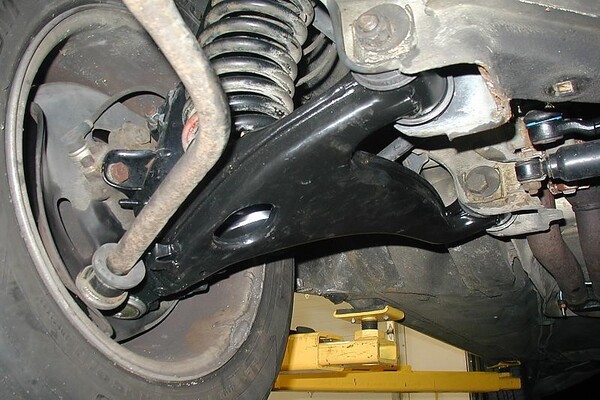
A lot of the front-wheel-drive vehicles of today come with lower control arms.
How Control Arm Bushing Works
The goal of the control arm bushing is to minimize the vibrations that are created between the wheels and the frame. This will keep your control arm aligned. Limited vibration is hardly noticeable and still be okay for comfortable rides. That is, as long as there are minimal annoying disturbances.
If there are no functional bushings, the metal-on-metal contact even will become unavoidable. This will cause a series of stronger vibrations and extreme driving discomfort. This can also cause potentially dangerous in-vehicle problems aside from making the whole drive irritating.
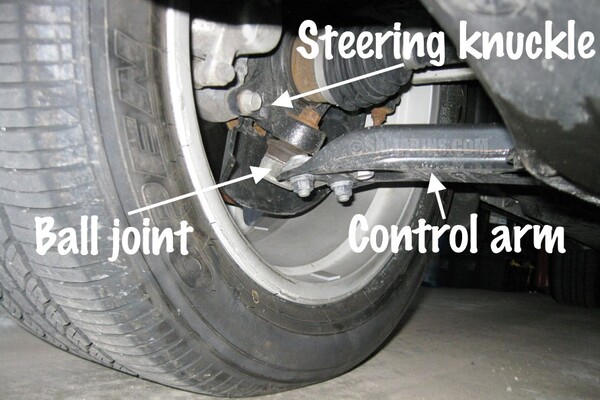
The control arm bushing minimizes the vibrations that are created between the wheels and the frame.
Symptoms That Your Control Arm Bushing is Defective
As we said earlier, time will come that some of your car parts will wear out. But the wear and tear process can be highly accelerated by extreme driving and handling conditions. Some examples are environmental factors, offroad trips and making use of aftermarket tires. Plus-sized tires specifically transfer a whole lot more vibrations to your car’s bushings.
This is because they have shorter sidewalls that need to fit over rims with large diameters. Once the bushings begin to wear out, the next thing you can expect is problems. These problems have a higher chance of arising if you’re driving and using the vehicle.
>>> Related: 4 Car Parts to Check After Flood
Here are some of the most common signs:
1. The steering wheel is vibrating.
If any of the control arm bushings become defective in your car, the first sign you’ll notice is this. You will most likely feel vibrations coming from the steering wheel. This will certainly be felt and are hard to pass by so you can’t miss it. The vibrations are expected to intensify once you begin and continue to accelerate. It may be so relentless that it can be annoying. This is caused by the wobbly wheels brought by excess activity in your vehicle system.

If a control arm bushings become defective in your car, the first sign you’ll notice is vibrating steering.
2. Banging or Clanking Sounds
If your vehicle’s arm control bushings loosen up or worn out, you will hear clunking sounds. This will come from under your vehicle. This is usually caused by arm bushings that are knocked between the control arm and the frame. This sound will intensify if you drive over rough and rocky terrain. However, even driving over tiny bumps or braking too hard can bring about banging noises.
>>> Related: 12 Things about Tire Maintenance That Every Car Owner Should Know
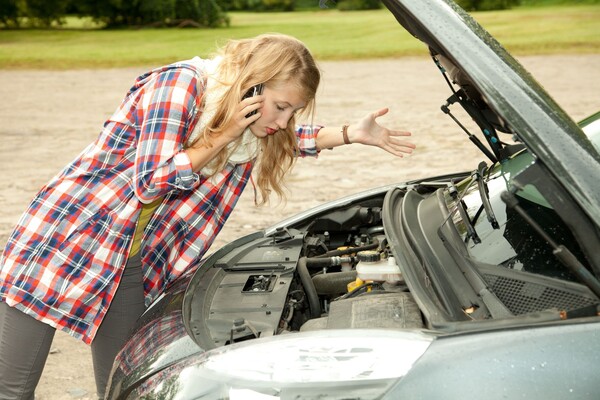
If your vehicle’s arm control bushings loosen up or worn out, you will hear clunking sounds.
3. The steering wheel has a mind of its own.
If your steering wheel pulls to the right or left without your permission, this can be caused by worn out bushings. As you may already know, the bushings hold your vehicle frame as well as the control arm in place. Defective bushings can make way for abnormalities.
There may even be excess movement in the entire system This can cause a misalignment in the wheels. Let’s say that the worn bushings caused the misalignments in your vehicle’s suspension. Having it aligned won’t work if the reason behind the worn bushings is components becoming loose from their positions.
When you ride your vehicle up the lift, make sure that the bushings are checked for abnormalities and damage. If you’re not sure how to look for signs of that, make sure you go to consult a good mechanic.
4. The tire wears unevenly
Check the treads on your tires to see if they wear out evenly. If there is uneven tire wear, this can be an indication of issue alignment. Just like we already discussed above, misalignments can be caused by worn out bushings.
Your vehicle can also prove to be in a normal state. It can even be within normal specifications even if they’re aligned by a professional.
>>> Related: 4 things to remember for your car's tire maintenance

If there is uneven tire wear, this can be an indication of issue alignment.
5. The braking is unstable.
Although this part is not directly connected to the braking system, the signs can still be exhibited by the latter. When you step on the brake all of a sudden, the vehicle’s front may sway back and forth while slowing down.
Find more useful information for car maintenance in our tips and advice section.
RECENT ARTICLES



